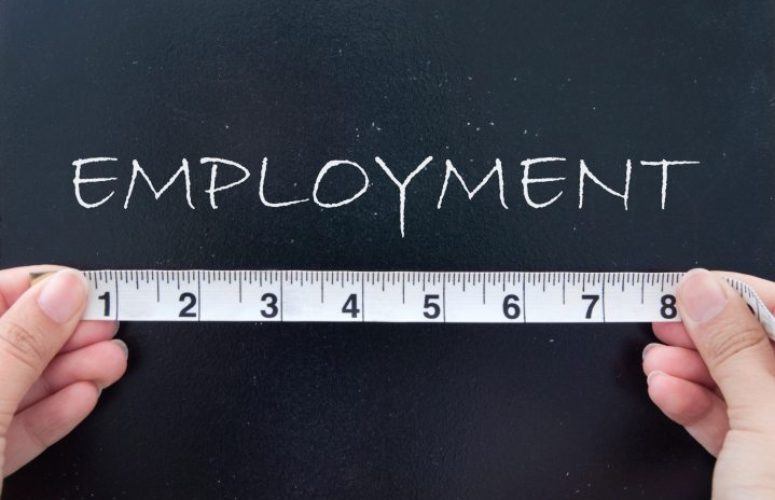
NJ’s Top Employers and Today’s Economy
While NJ’s economy remains steady, it needs to be stronger.
By Jim Pytell, Assistant Editor On Jul 31, 2019View the complete Top Employers Listing here.
Boring, okay and status-quo: these are words that can be used to describe the New Jersey economy over the past year. It is a trend that has remained more or less the same and one that has continued for several years.
While these are not necessarily the best words you can hear to describe an economy, they certainly are not the worst.
“The reality is that New Jersey has grown at pretty much the same pace for the last seven or eight years,” says Joel Naroff, president of Naroff Economic Advisors, Inc. “Sometimes we have a little bit better growth, sometimes a little worse, but when you look at the variation of the state’s growth rate, it’s been okay. It hasn’t been weak and it hasn’t been solid – it’s been moderate at best and fairly consistent around that pace.”
New Jersey’s economy also continues to lag behind the rest of nation, though this is true for the entirety of the Northeast region, in part due to lower population growth.
“If you don’t have bodies to fill the jobs, you are not going to get job growth,” says James Hughes, university professor, distinguished professor and dean emeritus, Rutgers University. “Help wanted signs are quite common today around the Garden State.”
According to estimates produced by the U.S. Bureau of Labor Statistics (BLS), New Jersey’s unemployment rate dipped to 3.8 percent this past May. Total nonfarm wage and salary employment, however, decreased by 7,600 jobs that month to reach a seasonally adjusted level of 4.2 million jobs. The job contraction was concentrated in the private sector (-8,400) of the state’s economy.
BLS statistics also show that in May, employment decreases were recorded in seven out of nine major private industry sectors: professional and business services (-3,500); trade, transportation, and utilities (-2,300); education and health services (-1,900); other services (-1,400); manufacturing (-500); leisure and hospitality (-300); and information (-100). Industry sectors that added jobs were construction (+800) and financial activities (+800).
Despite these decreases, when looking at the past year from May 2018 to May 2019, employment in New Jersey was higher by 45,900 jobs, with gains recorded in both the private sector (+42,000) and public sector (+3,900) of the New Jersey economy, according to BLS. Since February 2010 (the low point of the last recession), New Jersey’s private-sector employers have added 400,700 jobs.
Naroff points out that despite challenges from the Federal level such as the SALT deduction and the tariff situation, the New Jersey economy has held up remarkably well.
“The state, under the circumstances, has done about as well as could be hoped for,” Naroff says.
While having consistent, albeit slight growth, is a good thing, the biggest problem is that the consistent growth that New Jersey is seeing simply needs to be stronger.
“Growth is sustainable when you don’t have extremes. I would like to see the sustainable growth in New Jersey be stronger, but I don’t like to see a sudden surge in growth,” Naroff adds. “When you have a sudden surge in growth, it creates all of the issues that lead to a downturn.”
Is a Recession on the Horizon?
Last month, the record was set for the longest economic expansion in US history at 121 months in length. However, some are concerned that a recession in the near future is inevitable. The question is: are these concerns warranted?
“It may seem that we are on borrowed time, but the historical record shows that expansions rarely die of old age,” Hughes says. “It would take an external shock.”
He adds that the Federal Reserve is under pressure to keep the current expansion going, and will not be looking to increase interest rates anytime soon.
“Even without that pressure though, I think [the Federal Reserve] realizes that it may have went too far last year pushing up rates. Now we are in a situation where it might even lower them as we look ahead,” Hughes says. “The Federal Reserve is going to be supportive of keeping the economy going – there is no fear of inflation and the like.”
“Over the next 6-12 months, unless we were to go into a full-fledged trade war with China, we should get through [okay],” Naroff adds. “However, [in the 12-18 month range] I do think that we will start seeing a slow, but steady, deceleration of growth.
“The reason why many economists have upped their worries about the next 12-18 months is because of the hyping of the US economy. Three percent [economic] growth is just not sustainable, especially given the limitations on the labor force,” Naroff adds.
Compounding the problem is that New Jersey is not well positioned for the current risks that exist.
Naroff explains that if the risk to the economy is trade wars, it’s a “double whammy” for the state. Not only would the national economy slow, if not go into a recession, but you’d have it being caused by one of the things that is key to New Jersey’s economy, which is trade.
According to Naroff, if a recession were to happen, it would likely be considered moderate and not reach the levels of the 2008 Great Recession, though he adds that New Jersey would be on the “higher side of moderate.”
Technology and an Innovation Economy
Governor Murphy has set his sights on reclaiming New Jersey as an innovation hub – fostering an innovation economy that utilizes forward thinking and investments into the high-tech industries of the future, to better position New Jersey when it comes to economic competitiveness.
Naroff says the focus on fostering an innovation economy is certainly smart, but cautions that it will be a long process before the state truly reaps the benefits.
“It doesn’t turn things around overnight. You have to look at it as an investment into the future rather than something that will necessarily create jobs and centers of business in the near term. But unless you do that, you’re not going to get the concentrations you need to be competitive in this country in terms of research and STEM,” Naroff says.
“We have to be nimble enough to focus on innovative young companies that have the potential to create substantial growth in the future, but we also need to be prepared and able to react appropriately if a bigger company is considering a move out of state,” Hughes adds. “We have to realize that our tax structures are still generally business-unfriendly, so some of the incentive programs need to counteract that.”
Additionally, new technologies – such as automation – can lead to disruptions that have a noticeable impact on the economic landscape in the country and state. However, when it comes to automation, some of the concerns on its negative impacts may be a bit overstated.
“Every advance in the past did cause some short-term dislocations, but ultimately created newer jobs in the long run,” Hughes says. “I think that is still going to be the case now.”
He adds that while automation eliminating certain jobs can be a difficult process, workforce development programs and retraining programs can go a long way in easing the transition for affected employees.
“It’s really great to have automated warehouses, but somebody has to build that machinery and somebody has to take care of it,” Naroff says. “It’s not as if just because it’s automated it doesn’t break down. The care of [machines] creates different kinds of jobs.
“It also works to New Jersey’s benefit because we have moved much more heavily into a transportation economy. A robot makes moving goods and services more efficient, and you will still have to have goods and services distributed.”
Presenting the 47th Annual Top Employers Listing
Throughout the month of June, New Jersey Business contacted and researched a variety of target companies throughout the state (non-profit higher education institutions, non-profit hospitals and government entities are excluded) in an effort to compile information that includes 2019 employment figures (New Jersey and companywide) as well as financial (if applicable) and executive information. The 2019 New Jersey employee numbers were then compared to the previous year’s numbers, both individually and in aggregate. One must keep in mind, however, that these numbers are only a small sample of the state’s employers and they may not necessarily reflect the overall landscape of the economy and its job losses or gains, among other factors.
From the data received from employers as well as New Jersey Business estimates, 50% of the employers in the listing showed an increase in employment in 2019, compared to the 39% that had an increase in 2018. Thirty-three percent of the companies displayed a decline in employment in New Jersey, compared to 36% percent in 2018. Also, 16% of the companies in the listing went virtually unchanged from 2018. Due to new companies making their way into the listing, comparative data is not available for 1% of employers.
In 2019, the total number of New Jersey-based workers who were employed by companies in the Top Employers Listing was 290,245.
View the complete Top Employers Listing here.
To access more business news, visit NJB News Now.
Related Articles:





